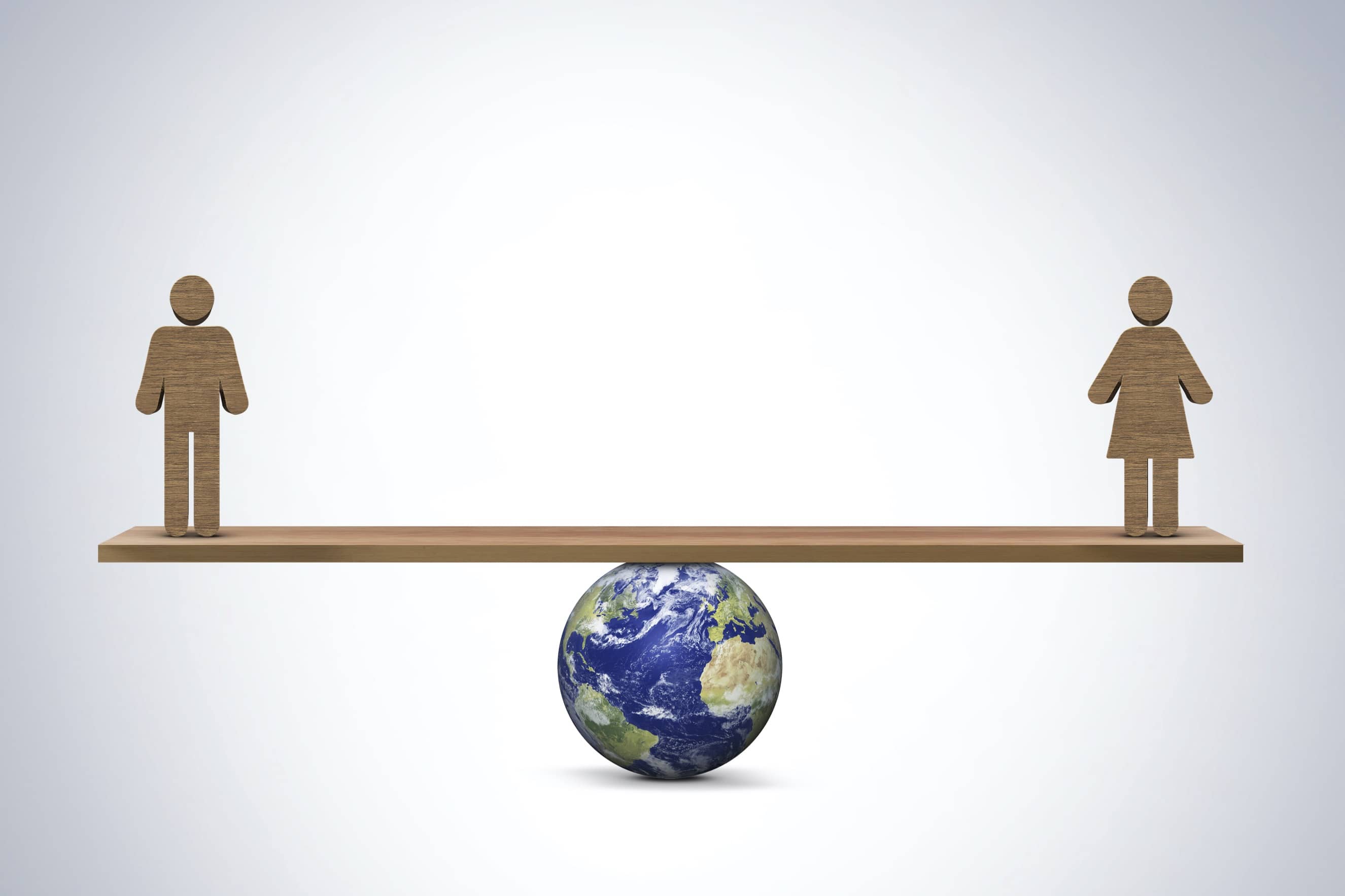
www.buildingsandcities.org/insights/commentaries/cop28-sdgs-gender-gaps.html
From COP28 to SDGs: Bridging the Gender Gaps

By Rihab Khalid (University of Cambridge)
COP28 must create transformative change to ensure gender equality and align with the framework of the UN's Sustainable Development Goals (SDGs). Gender equality, a cornerstone of this agenda, holds a critical lens to examine and address the intersecting crises of climate change and social inequity. Climate change has differential impacts on men and women, with the latter often bearing the disproportionate burden of climate-related impacts and vulnerabilities. Although women play a critical and transformative role in both climate adaptation and mitigation, they continue to face substantial challenges and disparities in terms of sustainable development.
COPs through a gender lens
Initially taken as a peripheral concern, gender equality has gradually evolved into a central tenet of the climate agenda at COPs, especially in recent years. Since the introduction of a dedicated Gender Day at COP17, there have been increasing discussions, events, and activities related to gender equality with growing acknowledgment of the indispensable role that women play in environmental stewardship.
The Lima Work Programme on Gender, initiated at COP20, set a precedent for gender-balanced participation and decision-making in climate governance. Recognising gendered climate disparities and the vulnerabilities faced by women, it sought to foster gender-responsive climate policy and action. Subsequent COPs have built upon this foundation, with COP23 marking a significant milestone with the introduction of the first Gender Action Plan. This plan was a call to action for the integration of gender considerations into all aspects of climate action and was further solidified into a comprehensive 5-year strategy at COP25. However, the road to gender balance in climate negotiations has been fraught with challenges. Despite the Gender Action Plan's call for integration, progress has been slow. According to the Women's Environment and Development Organization (WEDO) and their Gender Climate Tracker, even after a decade of commitments to gender balance, the representation of women in Party delegations stood at just 35% at COP27. This figure drops even lower within the UNFCCC's own constituted bodies, where less than half meet the parity mark, signalling a need for more substantial and transformative measures to be implemented.
COP26 marked a pivotal moment with the initiation of discussions on gender-responsive just transitions and climate finance, reflecting an increasing awareness of the need to ensure that financial mechanisms address the specific needs and vulnerabilities of women. This led to the establishment of the Women in Finance Climate Action Group which aimed to elevate the role of women in climate finance and support low-carbon projects with a gender perspective, along with ambitious new commitments by the Feminist Action for Climate Justice Action Coalition. Yet, at COP27, an intermediate review of the Gender Action Plan highlighted persistent concerns, particularly regarding the provision of additional resources for developing countries to implement gender-responsive policies. Despite calls for action, the two-week negotiation concluded with what many considered a lukewarm commitment to gender equality.
As we approach COP28, the need for a robust gender framework is more pressing than ever. With women's representation in negotiations from Africa and Asia at COP27 lingering at a low 30% and 31% respectively, it is clear that gender parity in decision-making is far from achieved. This underrepresentation is emblematic of broader gender inequalities in climate-related policy and decision-making. Moreover, as WEDO rightly notes, although women's increased participation is a crucial step, it does not guarantee gender-responsive action or lead to gender-transformative policies. Much more structural and systemic solutions are needed with multi-sectoral and intersectional dimensions that challenge current power structures and advance gender equality.
Gender and the SDGs
Whilst various gender-focused initiatives have been taken at COPs, its important to look at the big picture and examine how these align with the broader objectives of the UN's Sustainable Development Goals. According to the latest IPCC report, mitigation and adaptation actions have more synergies than trade-offs with the Sustainable Development Goals, and prioritising equitable and just transitions can enable improved climate resilience.
However, the latest UN report on gender tracking for the SDGs reveals a sobering reality: halfway to the 2030 Agenda, not a single target for Goal 5 (gender equality) has been met, and over 340 million women and girls remain in abject poverty. This is compounded by the absence of gender-specific indicators in six of the 17 SDGs, including critical areas such as access to energy, water, and resilient infrastructure. Without gender-disaggregated data, the depth of gender disparities remains hidden, and the development of targeted, equity-enhancing policies is significantly hindered. Looking at the gender-energy nexus, an estimated 341 million women and girls are projected to lack access to electricity by 2030-85% of whom are in sub-Saharan Africa. The digital divide persists, with women's access to technologies such as mobile phones significantly lagging behind. Furthermore, access to clean cooking fuels remains alarmingly low in the most vulnerable and impoverished regions, underlining the necessity of clean energy for progress across multiple SDGs.
From a spatial perspective, women's access to and ownership of land or secure tenure rights are disproportionately lower than those of men worldwide (with gender gaps of upto 50% in some African countries). Approximately 48% of women-headed households endure multidimensional poverty, compared to 40.6% of male-headed households. The future generation of women is expected to spend, on average, 2.3 more hours daily on unpaid care and domestic work than men, further constraining their socio-spatial access and opportunities. In terms of sustainable urban development, critical global data on women's land ownership and laws for equal land rights is conspicuously absent. With inequitable access to land, housing, and public space, projections indicate that over 1 billion women could be living in slums and slum-like settings by 2050. Such settlements, characterised by precarious infrastructure and limited resources, amplify women's vulnerability to climate change. According to UN Environment, 80% of people displaced by climate change are women. In addition, more women and girls are now living in conflict-affected areas (reaching 614 million, 50% higher than in 2017), further exacerbating their risk to violence and vulnerability to climate impacts.
Despite these alarming statistics, less than half of the countries have gender-disaggregated data on critical metrics like poverty and land ownership. Although gender-responsive actions were emphasised at COP27, the scale of commitments remained insufficient against the backdrop of the Gender Snapshot's findings. Only 23 countries formally acknowledge women's role in climate change mitigation, and only 55 climate action plans include gender-specific measures. Furthermore, global aid for gender equality and women's empowerment has decreased, with a mere 4% of total bilateral aid going towards gender-specified programs. This suggests that COP negotiations and outcomes need to support a more holistic integration of gender perspectives that is also in line with SDG targets.
Next steps: a call to gender action for COPs and beyond
The weak linkages between international policy-making processes and the global blueprint for gender equity and sustainability reveal that much more concentrated efforts are still needed towards empowering women and ensuring their sustainable development. As the recent IPCC report shows, there is a rapidly narrowing window of opportunity to enable climate resilience and sustainable development, for which diverse knowledge, inclusive governance and gender-equitable action will be instrumental. In linking gender and just transitions, the ILO's recent report highlights the importance of integrating explicit gender commitments and terminologies into Nationally Determined Contributions (NDCs), National Adaptation Plans (NAPs), and net-zero initiatives. This is reinforced in the recent UN Global Stocktake report which advocates for gender-sensitive, participatory, and transparent strategies that prioritise vulnerable groups and value indigenous knowledge.
COP28 provides a critical platform to advance gender equity and to mobilise much needed gender-responsive climate action and negotiation. Leveraging the momentum built at previous COPs, it must address the persistent gender inequalities that threaten the achievement of the SDGs. Whilst this year, the COP aims to put the spotlight on gender-focused finance for women's improved climate resilience, the upcoming conference must ensure that these discussions also translate into concrete gender-transformative actions and interventions, not just in relation to climate adaptation and mitigation but also in terms of other SDGs such as just energy transitions and the sustainable development of cities, as research shows that these intersections are critical for women's empowerment and just transitions. Efforts such as those of global coalitions like the Gender and Energy Compact are certainly contributing to this cause, and programmes like the Gender Just Climate Solutions and Empower Women, Benefit (for) All, must be highlighted and supported.
Navigating the complex interplay of gender, climate and sustainable development, COP28 must herald a shift from incremental to transformative change, ensuring no woman or girl is left behind in our collective pursuit of a resilient and sustainable future.
Latest Peer-Reviewed Journal Content
A framework for 1.5°C-aligned GHG budgets in architecture
G Betti, I Spaar, D Bachmann, A Jerosch-Herold, E Kühner, R Yang, K Avhad & S Sinning
Net zero retrofit of the building stock [editorial]
D Godoy-Shimizu & P Steadman
Co-learning in living labs: nurturing civic agency and resilience
A Belfield
The importance of multi-roles and code-switching in living labs
H Noller & A Tarik
Researchers’ shifting roles in living labs for knowledge co-production
C-C Dobre & G Faldi
Increasing civic resilience in urban living labs: city authorities’ roles
E Alatalo, M Laine & M Kyrönviita
Co-curation as civic practice in community engagement
Z Li, M Sunikka-Blank, R Purohit & F Samuel
Preserving buildings: emission reductions from circular economy strategies in Austria
N Alaux, V Kulmer, J Vogel & A Passer
Urban living labs: relationality between institutions and local circularity
P Palo, M Adelfio, J Lundin & E Brandão
Living labs: epistemic modelling, temporariness and land value
J Clossick, T Khonsari & U Steven
Co-creating interventions to prevent mosquito-borne disease transmission in hospitals
O Sloan Wood, E Lupenza, D M Agnello, J B Knudsen, M Msellem, K L Schiøler & F Saleh
Circularity at the neighbourhood scale: co-creative living lab lessons
J Honsa, A Versele, T Van de Kerckhove & C Piccardo
Positive energy districts and energy communities: how living labs create value
E Malakhatka, O Shafqat, A Sandoff & L Thuvander
Built environment governance and professionalism: the end of laissez-faire (again)
S Foxell
Co-creating justice in housing energy transitions through energy living labs
D Ricci, C Leiwakabessy, S van Wieringen, P de Koning & T Konstantinou
HVAC characterisation of existing Canadian buildings for decarbonisation retrofit identification
J Adebisi & J J McArthur
Simulation and the building performance gap [editorial]
M Donn
Developing criteria for effective building-sector commitments in nationally determined contributions
P Graham, K McFarlane & M Taheri
Reimagining circularity: actions for optimising the use of existing buildings
R Lundgren, R Kyrö, S Toivonen & L Tähtinen
Effective interdisciplinary stakeholder engagement in net zero building design
S Vakeva-Baird, F Tahmasebi, JJ Williams & D Mumovic
Metrics for building component disassembly potential: a practical framework
H Järvelä, A Lehto, T Pirilä & M Kuittinen
The unfitness of dwellings: why spatial and conceptual boundaries matter
E Nisonen, D Milián Bernal & S Pelsmakers
Environmental variables and air quality: implications for planning and public health
H Itzhak-Ben-Shalom, T Saroglou, V Multanen, A Vanunu, A Karnieli, D Katoshevski, N Davidovitch & I A Meir
Exploring diverse drivers behind hybrid heating solutions
S Kilpeläinen, S Pelsmakers, R Castaño-Rosa & M-S Miettinen
Urban rooms and the expanded ecology of urban living labs
E Akbil & C Butterworth
Living with extreme heat: perceptions and experiences
L King & C Demski
A systemic decision-making model for energy retrofits
C Schünemann, M Dshemuchadse & S Scherbaum
Modelling site-specific outdoor temperature for buildings in urban environments
K Cebrat, J Narożny, M Baborska-Narożny & M Smektała
Understanding shading through home-use experience, measurement and modelling
M Baborska-Narożny, K Bandurski, & M Grudzińska
Building performance simulation for sensemaking in architectural pedagogy
M Bohm
Beyond the building: governance challenges in social housing retrofit
H Charles
Heat stress in social housing districts: tree cover–built form interaction
C Lopez-Ordoñez, E Garcia-Nevado, H Coch & M Morganti
An observational analysis of shade-related pedestrian activity
M Levenson, D Pearlmutter & O Aleksandrowicz
Learning to sail a building: a people-first approach to retrofit
B Bordass, R Pender, K Steele & A Graham
Market transformations: gas conversion as a blueprint for net zero retrofit
A Gillich
Resistance against zero-emission neighbourhood infrastructuring: key lessons from Norway
T Berker & R Woods
Megatrends and weak signals shaping future real estate
S Toivonen
A strategic niche management framework to scale deep energy retrofits
T H King & M Jemtrud
Generative AI: reconfiguring supervision and doctoral research
P Boyd & D Harding
Exploring interactions between shading and view using visual difference prediction
S Wasilewski & M Andersen
How urban green infrastructure contributes to carbon neutrality [briefing note]
R Hautamäki, L Kulmala, M Ariluoma & L Järvi
Implementing and operating net zero buildings in South Africa
R Terblanche, C May & J Steward
Quantifying inter-dwelling air exchanges during fan pressurisation tests
D Glew, F Thomas, D Miles-Shenton & J Parker
Western Asian and Northern African residential building stocks: archetype analysis
S Akin, A Eghbali, C Nwagwu & E Hertwich
Join Our Community

The most important part of any journal is our people – readers, authors, reviewers, editorial board members and editors. You are cordially invited to join our community by joining our mailing list. We send out occasional emails about the journal – calls for papers, special issues, events and more.
We will not share your email with third parties. Read more



Latest Commentaries
COP30 Report
Matti Kuittinen (Aalto University) reflects on his experience of attending the 2025 UN Conference of the Parties in Belém, Brazil. The roadmaps and commitments failed to deliver the objectives of the 2025 Paris Agreement. However, 2 countries - Japan and Senegal - announced they are creating roadmaps to decarbonise their buildings. An international group of government ministers put housing on the agenda - specifying the need for reduced carbon and energy use along with affordability, quality and climate resilience.
Building-Related Research: New Context, New Challenges
Raymond J. Cole (University of British Columbia) reflects on the key challenges raised in the 34 commissioned essays for Buildings & Cities 5th anniversary. Not only are key research issues identified, but the consequences of changing contexts for conducting research and tailoring its influence on society are highlighted as key areas of action.